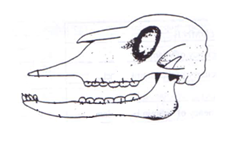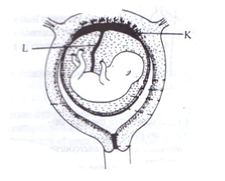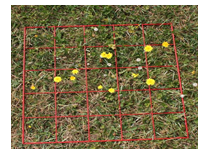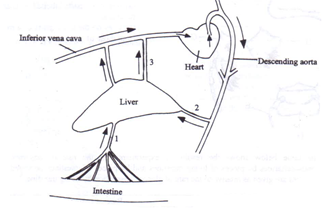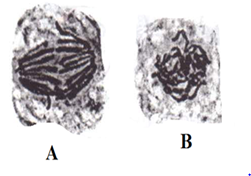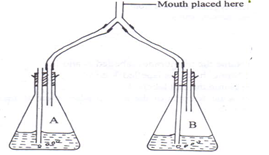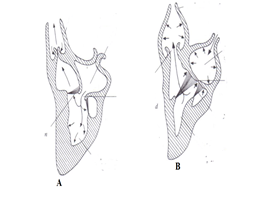- The figure below is a diagram of a skull. Use the diagram to answer questions.
- Identify the type of food utilized by an organism with such a skull. (1 mark)
- Give a reason for your answer in (a) above. (1 mark)
-
- Explain why specimens are important in studying biology. (1 mark)
- Identify an apparatus that is effective in capturing:
- A scorpion. (1 mark)
- Butterfly (1 mark)
-
- Identify an organelle that is most abundant in the proximal convoluted tubule. (1 mark)
- Give a reason for your answer in (a) above. (1 mark)
- A student enclosed a leafy shoot using a transparent polythene bag, after 45 minutes clear droplets were observed on the walls of the polythene bag. Anhydrous cobalt (II) chloride paper was used to determine the identity of the clear droplets.
- Identify the process under investigation. (1 mark)
- State the expected colour changes of anhydrous cobalt (II) chloride paper. (1 mark)
- Explain why the clear droplets cannot be observed when the leafy shoot is not enclosed in a polythene paper. (1 mark)
- The figure below illustrates the relationship between a developing foetus and maternal tissues
- Give two roles of part labeled K. (2 marks)
- Name a vessel in L that supplies nutrients and oxygen to the foetus. (1 mark)
- Explain why deficiency of vitamin K leads to excessive bleeding even in small cuts. (2 marks)
- Identify the parts of the mammalian heart that plays the following roles
- Prevents oxygenated blood from mixing with oxygenated blood. (1 mark)
- Secretes pericardial fluid. (1 mark)
- Prevents valves from turning inside out. (1 mark)
- A flower was observed to be scented.
- Identify the phylum of living organisms that transfer pollen grains within the species of plants having the flower. (1 mark)
- Name a physiological process that aids the organisms in (a) above effect the transfer of pollen grains while giving a reason. (2 marks)
- Explain why maize stalks do not undergo secondary growth yet they increase in girth. (3 marks)
- A food sample was made into suspension and a few drops of iodine was added into it. A blue black colour was obtained. A Benedict’s test on the sample gave a clear blue colour. Another sample of the same food was made into suspension. Some millet seeds which had been soaked for 48 hours were crushed and mixed with suspension. The mixture was incubated in warm
water bath for six hours at 350c. After incubation, the sample gave a negative test with iodine and positive test with Benedict’s solution.- Explain why the iodine test was negative after incubation. (2 marks)
- Explain why it is necessary to incubate the mixture in warm water bath. (1 mark)
- Explain why rate of absorption of mineral salts reduce with less oxygen concentration. (2 marks)
- Name the:
- Material that strengthens xylem tissue (1 mark)
- Tissue that is removed when the bark of a dicotyledonous plant is ringed. (1 mark)
- State two functions of a cell sap. (2 marks)
- Below is an apparatus used estimate the population of organisms especially plants
- What is the name of the apparatus? (1 mark)
- Explain why the apparatus is not suitable for estimation of animal population. (1 mark)
- State a one feature that can be used to identify the plants under enumeration above. (1 mark)
- Below are photographs of plant taken at different times of the day.
- Give a term for used to describe the nature of cells obtained from the plant at;
- 6:00 am(1 mark)
- 12:00 pm(1 mark)
- What is the significance of this phenomenon to herbaceous plants? (1 mark)
- Give a term for used to describe the nature of cells obtained from the plant at;
- The figure below illustrates the blood supply and drainage of the liver
- In which of the vessels labeled 1, 2 and 3 would you expect the highest concentration of glucose after an overnight of fast? Give a reason. (3 marks)
- The illustration below represents the base sequence of a segment of a nucleic acid.
- Which nucleic acid does the above segment represent? (1 mark)
- Give a reason for your answer in (b) above. (1 mark)
- Name the part of the cell where the segment of nucleic acid is used. (1 mark)
- Describe how the following structures lower the rate of transpiration;
- Sunken stomata. (2 marks)
- Hairy leaf. (1 mark)
- Explain the following observation made by Gregory Mendel in his experiments, A cross between a pure breed tall plant and a pure breed dwarf plant had all the first filial generation being tall. (2 marks)
- During an ecology field trip, students came across a pond with several bird species, upon closer look the students noted that the beaks of the birds were different in length, shape and size.
- Identify the type of evolution responsible for the beaks length, shape and size. (1 mark)
- What is the significance of the phenomenon to the birds? (2 marks)
-
- Explain why excessive use of pesticides in the soil lowers the concentration of nitrates. (2 marks)
- Explain why a total of 1000 animals that include; giraffes, elephants and zebras can occupy 10 acres of land without depletion of food and yet 1000 cattle will deplete resources in the same piece of land. (1 mark)
- Name two end products of anaerobic respiration in animals. (2 marks)
- Explain why the presence of air bubble in a xylem vessel would cause drying up of a plant (2 marks)
-
- Identify a useful excretory plant product obtained from raw paw paw fruits. (1 mark)
- Give the use of the plant excretory product named in (a) above. (1 mark)
- Name the method by which the following excretory products are removed from plants.
- Excess water. (1 mark)
- Carbon (IV) oxide from cellular respiration. (1 mark)
- In view of modern genetics, explain why the Lamarckian theory of evolution is not accepted. (2
- Below is a photograph on cell division.
Identify the stages labeled;A and B - The diagram below illustrates an experiment to show that there is much more carbon (IV) oxide in exhaled air than inhaled air. Calcium hydroxide is used in both flask A and B.
- Explain why it is necessary to use calcium hydroxide solution and not water. (2 marks)
- Identify the flask that shows higher presence of carbon (IV) oxide after five minutes. (1 mark)
- Explain why fertilization in flowering plants is termed double fertilization. (2 marks)
-
- What are the roles of testes in the mammalian reproductive system? (2 marks)
- Explain why female frogs produce large number of eggs. (2 marks)
- The diagrams below represent a process of the heart that constitutes a heartbeat. Observe and answer questions that follow.
- Identify each of the process labeled;A and B
- Give a reason for answers in (a)(i) above (1 mark)

MARKING SCHEME
- The figure below is a diagram of a skull. Use the diagram to answer questions.
- Identify the type of food utilized by an organism with such a skull. (1 mark)
Grass/vegetation; - Give a reason for your answer in (a) above. (1 mark)
Absence of upper incisors indicating presence of a horny pad against which grass is pressed for cutting;
A gap between lower canines and premolars, diastema, for manipulation of food;
- Identify the type of food utilized by an organism with such a skull. (1 mark)
-
- Explain why specimens important in studying biology. (1 mark)
Proper study and understanding of living things in laboratory; - Identify an apparatus that is effective in capturing:
- A scorpion. (1 mark)
Pair of forceps; - Butterfly (1 mark)
Sweep net;
- A scorpion. (1 mark)
- Explain why specimens important in studying biology. (1 mark)
-
- Identify an organelle that is most abundant in the proximal convoluted tubule. (1 mark)
Mitochondria; mitochondrion; - Give a reason for your answer in (a) above. (1 mark)
Yield energy for active transport;
- Identify an organelle that is most abundant in the proximal convoluted tubule. (1 mark)
- A student enclosed a leafy shoot using a transparent polythene bag, after 45 minutes clear droplets were observed on the walls of the polythene bag. Anhydrous cobalt (II) chloride paper was used to determine the identity of the clear droplets.
- Identify the process under investigation. (1 mark)
Transpiration; - State the expected colour changes of anhydrous cobalt (II) chloride paper. (1 mark)
Blue to pink; - Explain why the clear droplets cannot be observed when the leafy shoot is not enclosed in a polythene paper. (1 mark)
Plants lose water in form of water vapour;
- Identify the process under investigation. (1 mark)
- The figure below illustrates the relationship between a developing foetus and maternal tissues
- Give two roles of part labeled K. (2 marks)
Exchange of substance between mother and foetus;
Production of hormones; - Name a vessel in L that supplies nutrients and oxygen to the foetus. (1 mark)
Umbilical vein;
- Give two roles of part labeled K. (2 marks)
- Explain why deficiency of vitamin K leads to excessive bleeding even in small cuts. (2 marks)
Vitamin k is required for synthesis of prothrombin ; prothrombin is converted to thrombin that activates fibrinogen to fibrin;
- Identify the parts of the mammalian heart that plays the following roles
- Prevents oxygenated blood from mixing with oxygenated blood. (1 mark)
Septum; - Secretes pericardial fluid. (1 mark)
Pericardium; - Prevents valves from turning inside out. (1 mark)
Tendons ;
- Prevents oxygenated blood from mixing with oxygenated blood. (1 mark)
- A flower was observed to be scented.
- Identify the phylum of living organisms that transfer pollen grains within the species of plants having the flower. (1 mark)
Arthropoda - Name a physiological process that aids the organisms in (a) above effect the transfer of pollen grains while giving a reason. (2 marks)
Diffusion; scent diffuses from flower-region of high concentration to region of low concentration;
- Identify the phylum of living organisms that transfer pollen grains within the species of plants having the flower. (1 mark)
- Explain why maize stalks do not undergo secondary growth yet they increase in girth. (3 marks)
Maize are monocots, no vascular cambium; responsible for secondary growth; increase in girth is due to enlargement of primary cells;
- A food sample was made into suspension and a few drops of iodine was added into it. A blue black colour was obtained. A Benedict’s test on the sample gave a clear blue colour. Another sample of the same food was made into suspension. Some millet seeds which had been soaked for 48 hours were crushed and mixed with suspension. The mixture was incubated in warm water bath for six hours at 350c. After incubation, the sample gave a negative test with iodine and positive test with Benedict’s solution.
- Explain why the iodine test was negative after incubation. (2 marks)
Starch is hydrolysed to reducing sugars; by enzymes present in the germinating seeds; - Explain why it is necessary to incubate the mixture in warm water bath. (1 mark)
Optimum temperature;
- Explain why the iodine test was negative after incubation. (2 marks)
- Explain why rate of absorption of mineral salts reduce with less oxygen concentration. (2 marks)
Oxygen is required in the process of respiration; to yield energy for active transport;
- Name the:
- Material that strengthens xylem tissue (1 mark)
Lignin; - Tissue that is removed when the bark of a dicotyledonous plant is ringed. (1 mark)
Phloem;
- Material that strengthens xylem tissue (1 mark)
- State two functions of a cell sap. (2 marks)
Maintain cell shape;
Contain sugars and salts hence cause osmotic pressure;
- Below is an apparatus used estimate the population of organisms especially plants
- What is the name of the apparatus? (1 mark)
Quadrat; - Explain why the apparatus is not suitable for estimation of animal population. (1 mark)
Animals are highly mobile; - State a one feature that can be used to identify the plants under enumeration above. (1 mark)
Flowers;
- What is the name of the apparatus? (1 mark)
- Below are photographs of plant taken at different times of the day.
- Give a term for used to describe the nature of cells obtained from the plant at;
- 6:00 am turgid; (1 mark)
- 12:00 pm flaccid: (1 mark)
- What is the significance of this phenomenon to herbaceous plants? (1 mark)
Support; expose leaves for photosynthesis;
- Give a term for used to describe the nature of cells obtained from the plant at;
- The figure below illustrates the blood supply and drainage of the liver
- In which of the vessels labeled 1, 2 and 3 would you expect the highest concentration of glucose after an overnight of fast? Give a reason. (3 marks)
3;stored glucose/glycogen; is broken down to glucose due to low glucose concentration by hormone glucagon;
- In which of the vessels labeled 1, 2 and 3 would you expect the highest concentration of glucose after an overnight of fast? Give a reason. (3 marks)
- The illustration below represents the base sequence of a segment of a nucleic acid.
- Which nucleic acid does the above segment represent? (1 mark)
mRNA - Give a reason for your answer in (b) above. (1 mark)
Presence of uracil; - Name the part of the cell where the segment of nucleic acid is used. (1 mark)
Ribosome/cytoplasm;
- Which nucleic acid does the above segment represent? (1 mark)
- Describe how the following structures lower the rate of transpiration;
- Sunken stomata. (2 marks)
Water vapour accumulates in the pits lowering saturation deficit; - Hairy leaf. (1 mark)
Hairy leaf traps a layer of moisture lowering saturation deficit;
- Sunken stomata. (2 marks)
- Explain the following observation made by Gregory Mendel in his experiments, A cross between a pure breed tall plant and a pure breed dwarf plant had all the first filial generation being tall. (2 marks)
Complete dominance; gene for tallness is dominant;
- During an ecology field trip, students came across a pond with several bird species, upon closer look the students noted that the beaks of the birds were different in length, shape and size.
- Identify the type of evolution responsible for the beaks length, shape and size. (1 mark)
Divergent evolution; - What is the significance of the phenomenon to the birds? (2 marks)
Allows organisms to exploit different ecological niches;eliminating competition;
- Identify the type of evolution responsible for the beaks length, shape and size. (1 mark)
-
- Explain why excessive use of pesticides in the soil lowers the concentration of nitrates. (2 marks)
Pestcides kill nitrogen fixing bacteria; that convert atmospheric nitrogen to nitrates; - Explain why a total of 1000 animals that include; giraffes, elephants and zebras can occupy 10 acres of land without depletion of food and yet 1000 cattle will deplete resources in the same piece of land. (1 mark)
Exploit different ecological niche; feed on different parts of vegetation unlike cattle;
- Explain why excessive use of pesticides in the soil lowers the concentration of nitrates. (2 marks)
- Name two end products of anaerobic respiration in animals. (2 marks)
Energy; lactic acid ;/ Co2
- Explain why the presence of air bubble in a xylem vessel would cause drying up of a plant (2 marks)
Breaks the cohesion force between water molecules; interrupting the continuous column of water;
-
- Identify a useful excretory plant product obtained from raw paw paw fruits. (1 mark)
Papain; - Give the use of the plant excretory product named in (a) above. (1 mark)
Tenderize meat;
- Identify a useful excretory plant product obtained from raw paw paw fruits. (1 mark)
- Name the method by which the following excretory products are removed from plants.
- Excess water. (1 mark)
Transpiration; - Carbon (IV) oxide from cellular respiration. (1 mark)
Diffusion;
- Excess water. (1 mark)
- In view of modern genetics, explain why the Lamarckian theory of evolution is not accepted. (2 marks)
Acquired characteristics; are not inherited in genes;
- Below is a photograph on cell division.
Identify the stages labeled;- A anaphase; (1 mark)
- B interphase; (1 mark)
- The diagram below illustrates an experiment to show that there is much more carbon (IV) oxide in exhaled air than inhaled air. Calcium hydroxide is used in both flask A and B.
- Explain why it is necessary to use calcium hydroxide solution and not water. (2 marks)
Calcium hydroxide reacts with CO2; to form a white precipitate; - Identify the flask that shows higher presence of carbon (IV) oxide after five minutes. (1 mark)
B;
- Explain why it is necessary to use calcium hydroxide solution and not water. (2 marks)
- Explain why fertilization in flowering plants is termed double fertilization. (2 marks)
Egg cell fuses with one of the male nuclei to form a diploid zygote and the other male nuclei fuses with polar nuclei to form triploid endosperm;
-
- What are the roles of testes in the mammalian reproductive system? (2 marks)
Produce sperms;
Production of hormones; - Explain why female frogs produce large number of eggs. (2 marks)
External Fertilization; to increase chances of fertilization;
- What are the roles of testes in the mammalian reproductive system? (2 marks)
- The diagrams below represent a process of the heart that constitutes a heartbeat. Observe and answer questions that follow.
- Identify each of the process labeled;
- A Diastole; (1 mark)
- B Systole; (1 mark)
- Give a reason for answers in (a)(i) above (1 mark)
Volume of ventricles increase;/Cuspid valves open;/Semilunar valves close;
- Identify each of the process labeled;
Join our whatsapp group for latest updates
Tap Here to Download for 50/-
Get on WhatsApp for 50/-
Download BIOLOGY PAPER 1 - KCSE 2019 MOKASA PRE MOCK EXAMINATION.
Tap Here to Download for 50/-
Get on WhatsApp for 50/-
Why download?
- ✔ To read offline at any time.
- ✔ To Print at your convenience
- ✔ Share Easily with Friends / Students

